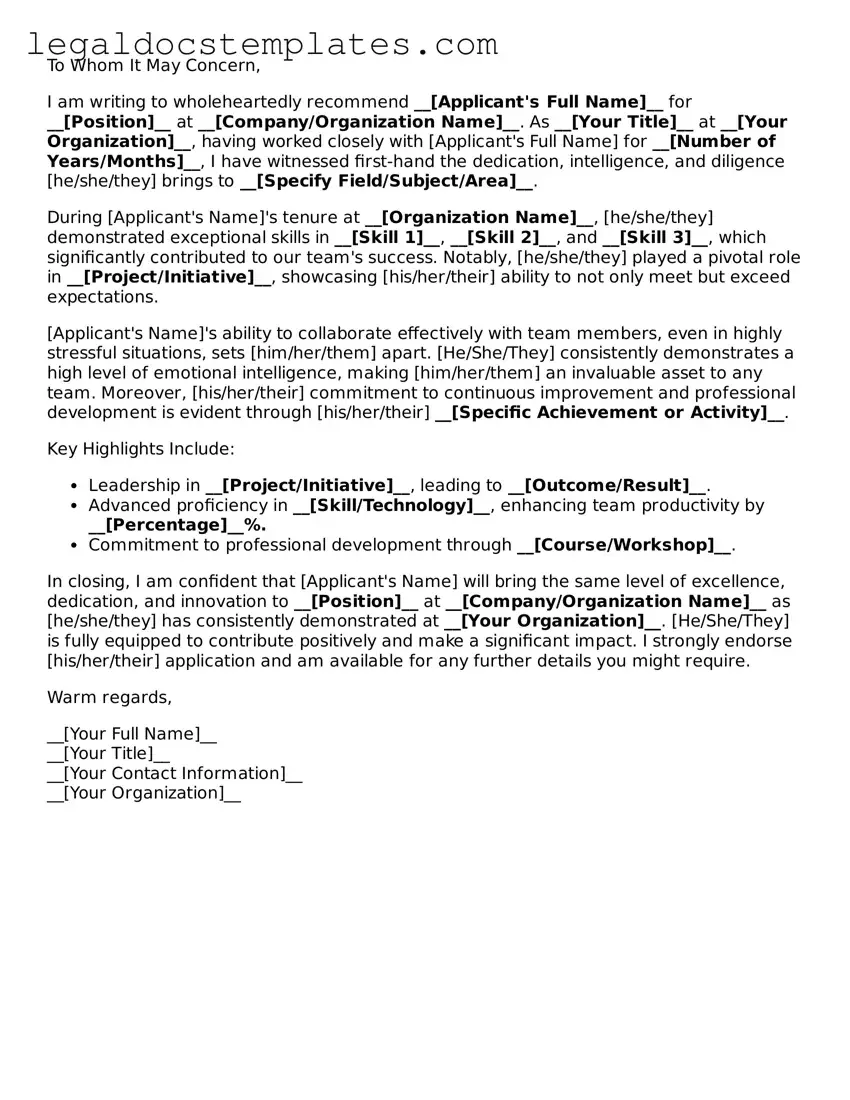What is a Recommendation Letter?
A Recommendation Letter is a document where the writer assesses the qualities, characteristics, and capabilities of the person being recommended in terms of that individual’s ability to perform a particular task or function. Generally, it is written by a previous employer, teacher, or someone else who can speak positively to the character or professional abilities of the person being recommended.
Who can write a Recommendation Letter?
Almost anyone who knows the person in a professional, academic, or personal capacity can write a Recommendation Letter. This includes but is not limited to:
-
Teachers or academic advisors
-
Current or former employers
-
Co-workers or colleagues
-
Mentors or coaches
-
Community or organization leaders
The key factor is that the writer should know the person well enough to provide specific examples of their abilities and character.
What should be included in a Recommendation Letter?
A well-crafted Recommendation Letter should include:
-
An introduction that explains the writer's relationship to the person being recommended.
-
An overview of the person’s attributes and accomplishments.
-
Specific examples that illustrate the person’s skills and qualifications.
-
A summary that reiterates the writer’s support and offers to provide further information if necessary.
The letter should be positive, professional, and specific to the person’s abilities and the opportunity they are seeking.
How long should a Recommendation Letter be?
A Recommendation Letter should typically be one page in length. It needs to be concise yet detailed enough to provide a clear and comprehensive view of the person’s qualifications and character.
Can a Recommendation Letter be used for multiple applications?
While a recommendation letter can technically be used for multiple applications, it’s best to tailor the letter to each specific application. A personalized letter that speaks directly to the requirements of the position or opportunity in question is more effective. However, if the person’s qualifications directly align with multiple opportunities without significant variation, a general letter may suffice for similar applications.
Is it necessary to sign a Recommendation Letter?
Yes, it is necessary to sign a Recommendation Letter. A handwritten signature adds a personal touch and authenticity to the document, indicating that the recommender stands behind their statement fully. If the letter is being sent electronically, a digital signature or scanned image of the handwritten signature should be included.
The Recommendation Letter should follow a formal business letter format, starting with the writer’s contact information and date at the top, followed by the recipient’s contact information (if known), a formal greeting, the body of the letter, a closing, and the writer’s signature. Ensure that the formatting is professional - using a standard font and size, and spacing the letter appropriately.
Can a Recommendation Letter be negative?
Generally, a Recommendation Letter should be positive, focusing on the strengths and abilities of the person being recommended. If a writer cannot truthfully recommend someone or feels that their endorsement would be lukewarm at best, it’s better to decline to write the letter than to write a negative one. A negative or even ambiguously positive letter can harm a person’s chances rather than help them.
How can someone request a Recommendation Letter?
Requesting a Recommendation Letter should be done with consideration and respect for the writer’s time and effort. The request should be made well in advance of the deadline, preferably in person or via a personal communication method. It’s helpful to provide the writer with information about the purpose of the letter, any relevant details about the position or opportunity being applied for, and highlights of what the person would like included in the letter. Providing a resume or list of accomplishments can also help the writer create a more compelling letter.
